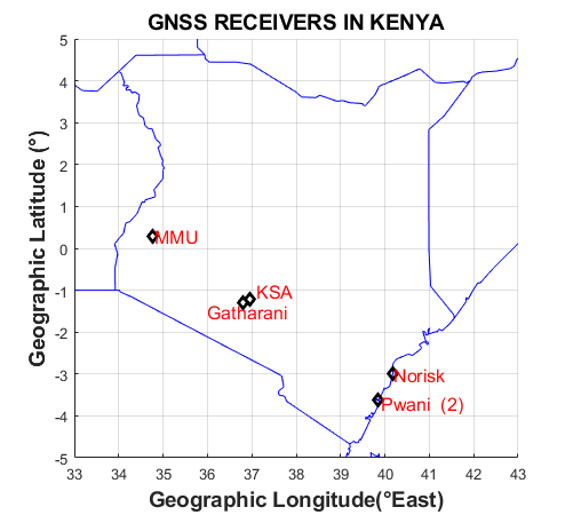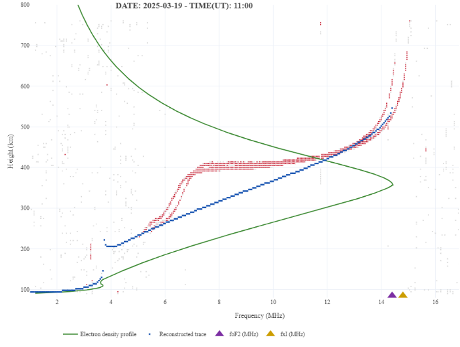
Location of GNSS receivers in Kenya
These measurements help track signal degradation, including interruptions, signal strength, positioning errors, and instances of loss of satellite connectivity. Such disruptions pose significant challenges to positioning and navigation reliability, especially in critical sectors like transport, aviation, geospatial mapping, precision agriculture, and emergency response.
The NORISK ionosonde plays an important role in the prediction of High-Frequency (HF) radio communication performance over Kenya. This is accomplished by analysing key parameters extracted from the ionograms it generates, including:
• foF2 (Critical Frequency of the F2 layer): Determines the highest frequency that can be reflected at vertical incidence.
• MUF (Maximum Usable Frequency): The highest frequency suitable for long-distance communication via ionospheric reflection.
• Spread-F Occurrence: Indicates potential signal scattering and degradation.
These parameters allow for real-time HF frequency selection, estimation of signal weakening caused by Spread-F, and assessment of D-region absorption, primarily influenced by solar flares, which impacts lower HF bands (below 10 MHz) and can result in communication blackouts. Field like: aviation, maritime, military, and emergency response operators can leverage continuous monitoring to dynamically adjust HF communication frequencies, mitigate blackouts, and optimise long-distance signal propagation.
